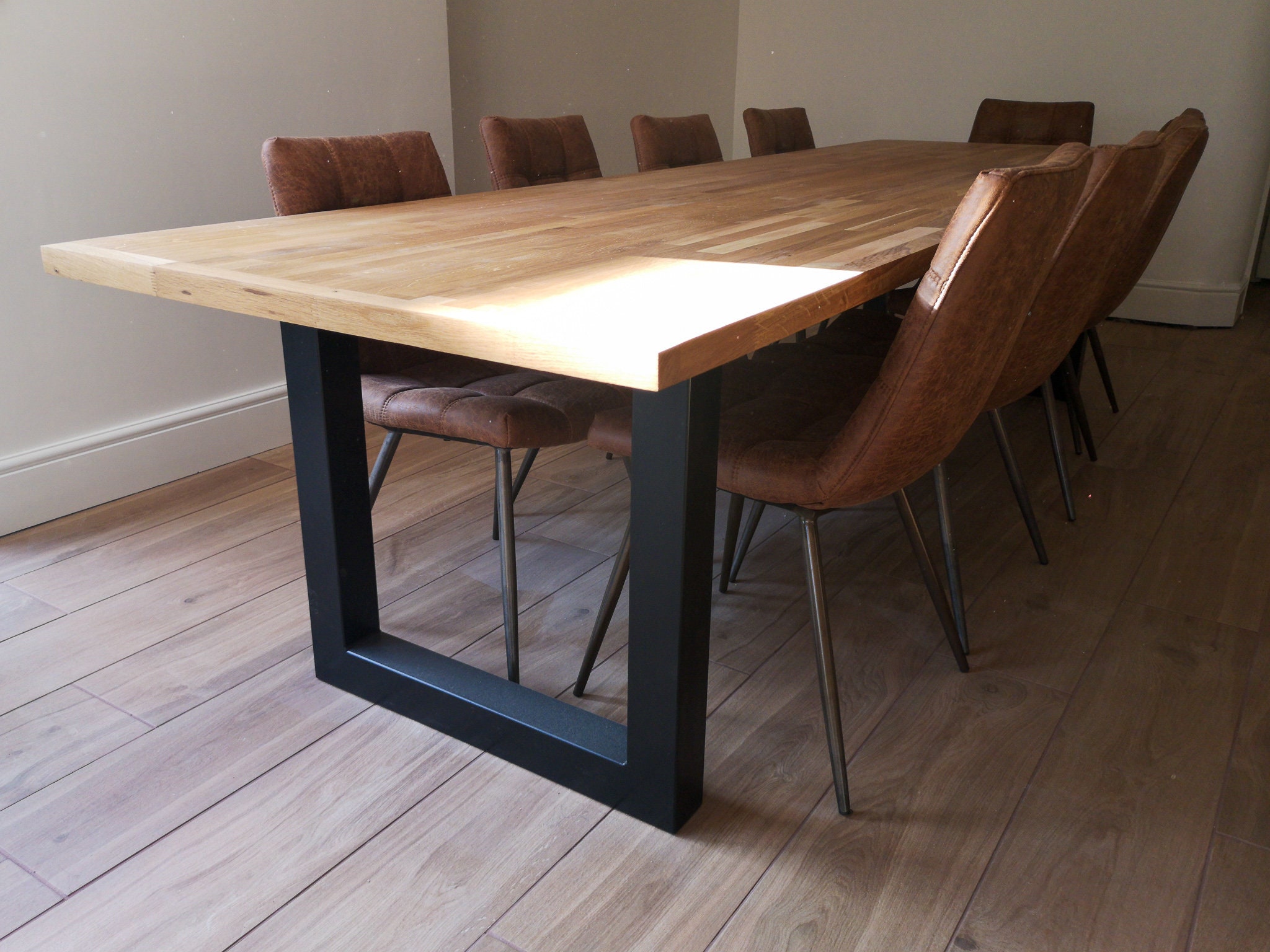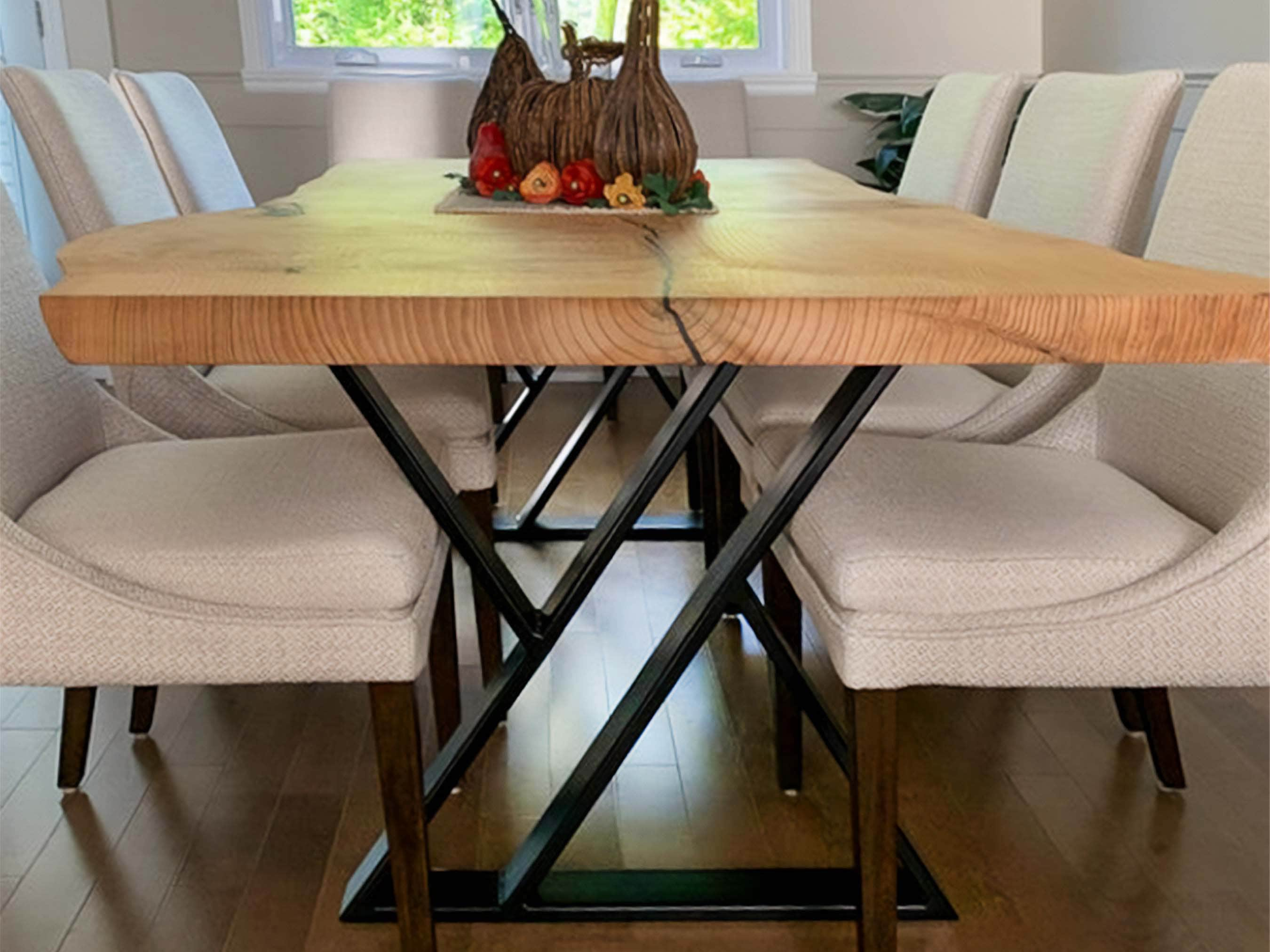Upgrade Your Furniture with Stylish Dining Room Table Legs
Upgrade Your Furniture with Stylish Dining Room Table Legs
Blog Article
Picking the Perfect Dining Table: What Styles Work Best for Your Home?
Selecting the suitable eating table for your home can be a nuanced process that stabilizes visual appeals and capability. To browse these choices successfully and discover a table that really complements your home, think about the following facets in detail.
Analyzing Your Area
Reviewing the dimensions and format of your eating area is a critical very first step in selecting the perfect table. Begin by measuring the size and width of the space, making up doorways, windows, and various other architectural attributes that might affect table placement. This ensures that your table not only fits however also allows for comfortable motion around it.
Think about the number of people you typically delight. A table needs to accommodate your household's day-to-day requirements while supplying enough adaptability for occasional visitors. Generally of thumb, allocate at the very least 24 inches of table width each to make sure a comfy eating experience.
It's likewise important to preserve ideal clearance around the table. Preferably, there must be at the very least 36 inches in between the table side and wall surfaces or various other furnishings, enabling easy access and activity. For areas where chairs with arms or added storage space devices like buffets are included, enhancing this clearance to 48 inches is recommended.
Lighting and ambience play significant functions. Guarantee that your eating table aligns with existing illumination components or prepare for sufficient lighting options. This extensive spatial assessment warranties that your eating table not only fits physically but additionally integrates with your space's general functionality and aesthetic.
Popular Table Styles

Traditional table typically feature luxuriant information, curved legs, and rich timber surfaces, evoking a feeling of timeless elegance. They are perfect for homes with timeless decoration or those looking to include a touch of refinement to their dining area.
Modern eating tables focus on simplicity and tidy lines, usually integrating materials like glass and metal. These tables are suitable for contemporary spaces, giving a streamlined and uncluttered appearance that matches minimalist style approaches.
Rustic table, on the other hand, stress natural products and a handcrafted look - dining room table legs. They frequently include redeemed timber and a distressed finish, producing a warm and inviting ambience. These tables function well in farmhouse-style homes or those looking for a cozy, natural feeling
Industrial eating tables combine basic materials such as steel and wood, commonly showcasing an utilitarian visual. This design is well-suited for loft spaces or urban spaces, adding a touch of tough charm and longevity to the eating experience.
Each design uses unique advantages, making it necessary to select one that aligns with your home's total layout and your individual preferences.
Material Choices
When selecting a table, the choice of material plays a critical duty in figuring out both the table's visual appeals and capability. Wood, steel, glass, and composite materials each offer distinct advantages and obstacles, making it imperative to align the material with your home's decor and way of life demands.
Wood is a classic and flexible alternative, available in ranges such as oak, walnut, and mahogany. Recognized for its sturdiness and heat, wood matches both typical and modern interiors. However, it calls for normal upkeep to stop scratches and bending.
Steel tables, typically crafted from stainless steel, light weight aluminum, or wrought iron, are applauded for their contemporary allure and robustness. They are particularly matched for commercial or minimal setups however can be susceptible to dents and might feel cold to the touch.
Glass eating tables bring an air of beauty and visibility, ideal for smaller sized rooms as they create an illusion of even more area. While easy to tidy, glass can be susceptible to spots and needs cautious managing to avoid chips and fractures.
Composite products, such as MDF and plywood, deal economical and customizable solutions, though they may do not have the longevity of all-natural products. Choosing the right product ensures your table is both a useful possession and a visual pleasure.
Sizes And Shape Considerations
After identifying the appropriate product for your eating table, the following consideration is picking the ideal shape and dimension to fit your room. Conversely, round tables foster a sense of intimacy and are superb for smaller dining locations, motivating conversation by eliminating corners and making every person feel equally consisted of.
Dimension is just as vital and must be have a peek here determined by both the area's measurements and the variety of individuals you plan to seat frequently. As a guideline of thumb, designate at the very least 24 inches of table size per person to guarantee comfortable eating. In addition, think about the table's clearance room: there must go to least 36 inches between the table side and the wall surfaces or various other furnishings. This makes sure that diners can move around easily without really feeling cramped. Prolonging tables supply flexibility if you frequently host larger gatherings, offering added seats when required without occupying extra area daily. Picking the appropriate sizes and shape ensures both practicality and visual harmony in your dining location.
Matching Your Style
Selecting a table that integrates with your existing style is crucial in creating a cohesive and welcoming room. Begin by examining your present interior layout style, whether it be modern, standard, rustic, or diverse. The dining table need to match the general aesthetic, not take on it. For circumstances, a smooth, minimal table with clean lines is perfect for a contemporary home, while a vintage, luxuriant table suits a much more typical setting.
Color and material are equally substantial. If your design includes cozy tones useful site and all-natural products, think about a wooden table to enhance the organic feeling. On the other hand, a glass or steel table may be better suited in a room dominated by great colors and commercial aspects. Focus on the coating, as it should mirror various other furniture and components to keep harmony.
Structure plays a crucial duty also. A rough-hewn, reclaimed wood table can add character to a rustic area, while a refined marble surface can elevate a glamorous dining area. Take into consideration the range and percentage of the table in relation to the area size and existing furnishings. A well-matched eating table not just enhances aesthetic appeal yet likewise improves the general dining experience.

Conclusion
Picking the excellent dining table demands mindful factor to consider of area, style, products, form, and dimension. Traditional tables complement classic insides with rich wood coatings, while modern-day tables match Get More Information contemporary setups with glass and metal.
Report this page